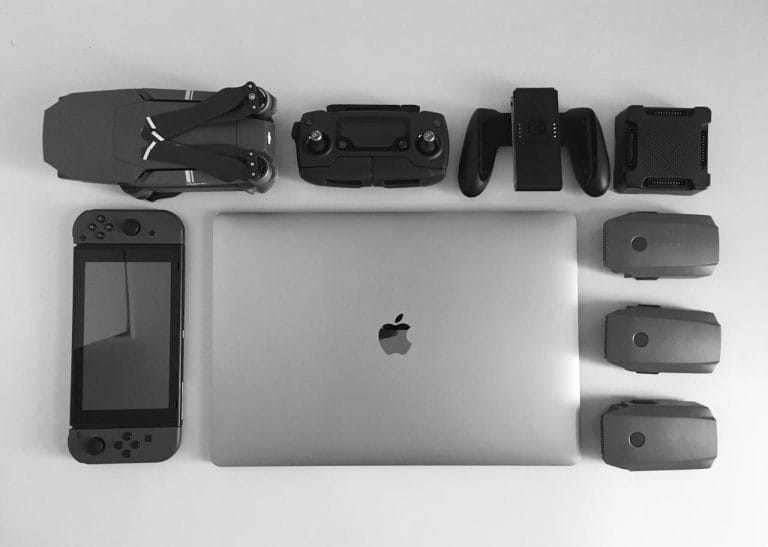
Forget chasing thousands of page views. In 2025, you can make real money online with just a few hundred highly targeted readers — if you play it smart.
The key? Hyper-niche affiliate blogs.
Instead of building a generic gadget or lifestyle site, you’re going deep into one specific sub-topic, helping people make decisions, and getting paid every time they click or buy.
Let’s walk through the full process — from choosing the niche to getting your first affiliate sale.
Table of Contents
Step 1: Choose a Niche With Buyer Intent (Not Just Interest)
You’re not writing for hobbyists. You’re writing for people who are already searching with their wallets halfway open.
Examples that work in 2025:
- “Best ergonomic keyboards for programmers”
- “Noise-canceling earbuds for truck drivers”
- “Laptop cooling pads for gaming laptops overheat fix”
What makes these great?
- They solve specific problems
- The searcher is already shopping
- You can easily link to Amazon, Best Buy, or niche affiliate programs
Step 2: Find Low-Competition Keywords
You’re not trying to outrank Wirecutter or TechRadar. You’re going for keywords with low difficulty but high purchase intent.
Use:
- Ubersuggest or LowFruits.io to find long-tail keywords
- Google Autosuggest for exact phrases
- Reddit + Amazon reviews for real-world phrasing
Example:
Instead of “best webcams,” try “best webcam for Zoom teaching under $50” — lower competition, higher conversion.
Step 3: Write Conversion-Focused Content (Not Just Reviews)
Your blog post isn’t a book report. It’s a helpful buying guide with personality and trust.
Structure:
- Quick intro (speak to their problem)
- Featured picks (with affiliate links)
- Pros/cons, specs, mini comparisons
- Real talk — who it’s for, who it’s not
- Call to action — “Check price on Amazon”
Add your real experience or a bit of humor. That builds trust — and trust drives clicks.
Step 4: Add Affiliate Links the Smart Way
You don’t need a million links. You need strategic, clear calls to action.
✔ Use buttons like:
- 🔗 “Check latest price on Amazon”
- 🔗 “See full features here”
- 🔗 “Compare on Anker’s official site”
✔ Make links open in a new tab.
✔ Add a disclaimer: “As an affiliate, I may earn from qualifying purchases.”
Step 5: Get Targeted Traffic Without Social Media
No, you don’t need to dance on TikTok.
Start with these traffic channels:
- Pinterest SEO – Works surprisingly well for product roundups
- Quora Answers – Link back to helpful blog posts
- Reddit threads – Add value, then drop your post when relevant
- Google – Optimize title, meta, and headers with your exact keyword
Focus on one post at a time. Rank that. Then write the next.
Real Example: 500 Visitors, $120 in One Week
Let’s say you write a blog post called:
“Best Laptop Stand for Neck Pain (Budget + Adjustable Picks)”
It targets:
- A real pain point
- Specific products people are ready to buy
- Keywords no major site is targeting
Even if you get just 500 readers in a week, and 5% click your affiliate link:
- That’s 25 clicks
- If 5 buy $50 products = ~$120 in commissions (depending on rate)
Now imagine 10 blog posts like that.
Why This Works in 2025
Google is pushing more helpful, specific content from real people. AI-generated fluff is everywhere — but actual experience and tight niches still win.
And with affiliate marketing:
- You don’t need to create a product
- You don’t need customer service
- You can start earning with just a few blog posts
Tools You’ll Need (Free or Cheap)
- WordPress + Astra theme (lightweight, fast)
- Rank Math (SEO plugin)
- Ubersuggest or LowFruits.io (keyword research)
- Canva (for Pinterest pins or blog images)
- Amazon Associates or niche affiliate networks
Final Thought
In 2025, making money online doesn’t mean going viral.
It means going narrow. Solving real problems. Helping people decide.
If you can write like a helpful friend and focus on smart keywords, you can build a blog that earns quietly — and grows consistently.
Start small. Stay specific. And don’t quit after one post.



